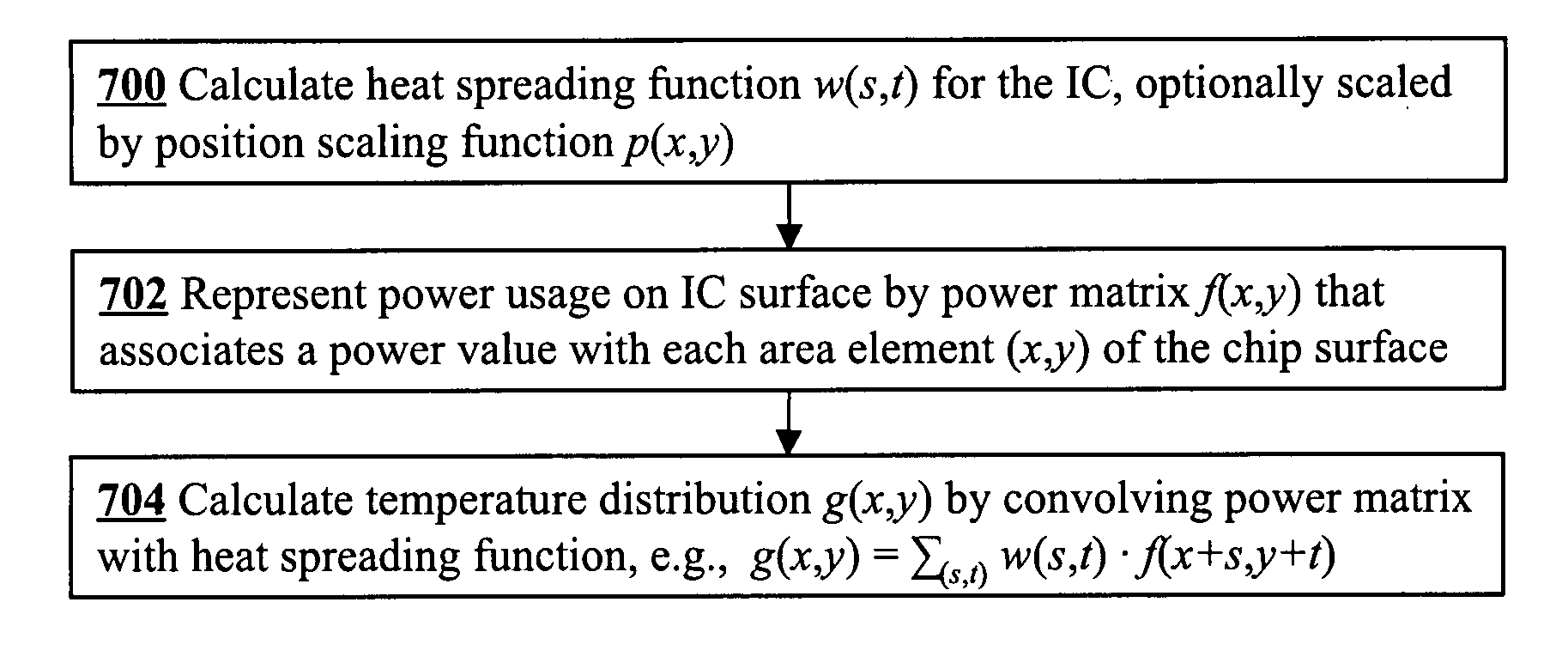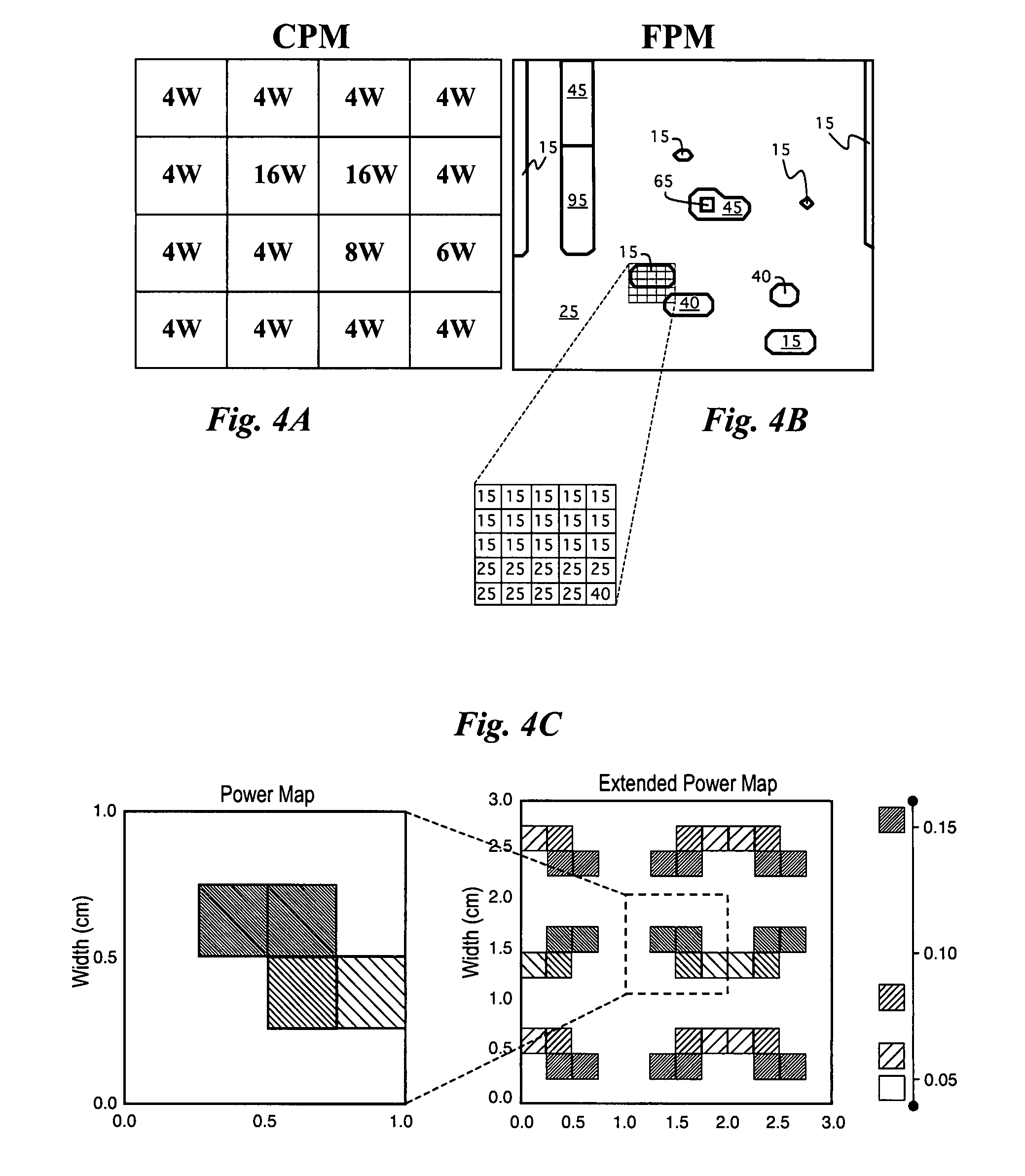Efficient method to predict integrated circuit temperature and power maps
- Summary
- Abstract
- Description
- Claims
- Application Information
AI Technical Summary
Benefits of technology
Problems solved by technology
Method used
Image
Examples
Embodiment Construction
[0019] A key feature of the present invention is the technique of computing an IC temperature distribution by convolving a power matrix with a heat spreading function, or mask. To better understand this unique approach, it is helpful to recall how convolution is used in the field of image processing for image blurring. The intensity levels of pixels (x,y) of a black and white digital image are represented by a matrix of numerical values, f (x,y). The process of spatial filtering (e.g., blurring) computes a new intensity value g (x,y) of each pixel in an image by convolution of f with another matrix w, known as a mask, to produce the blurred image g. The mask w (s,t) determines how the intensity of each pixel (x,y) is spread to nearby pixels (x+s,y+t). For example, the 3×3 mask w(s,t)=[0.050.100.050.100.400.100.050.100.05]
spreads 60% of a pixel's intensity to adjacent pixels, with 10% being spread to adjacent pixels to the right, left, up, and down, and 5% being spread to the four...
PUM
 Login to View More
Login to View More Abstract
Description
Claims
Application Information
 Login to View More
Login to View More - R&D
- Intellectual Property
- Life Sciences
- Materials
- Tech Scout
- Unparalleled Data Quality
- Higher Quality Content
- 60% Fewer Hallucinations
Browse by: Latest US Patents, China's latest patents, Technical Efficacy Thesaurus, Application Domain, Technology Topic, Popular Technical Reports.
© 2025 PatSnap. All rights reserved.Legal|Privacy policy|Modern Slavery Act Transparency Statement|Sitemap|About US| Contact US: help@patsnap.com



